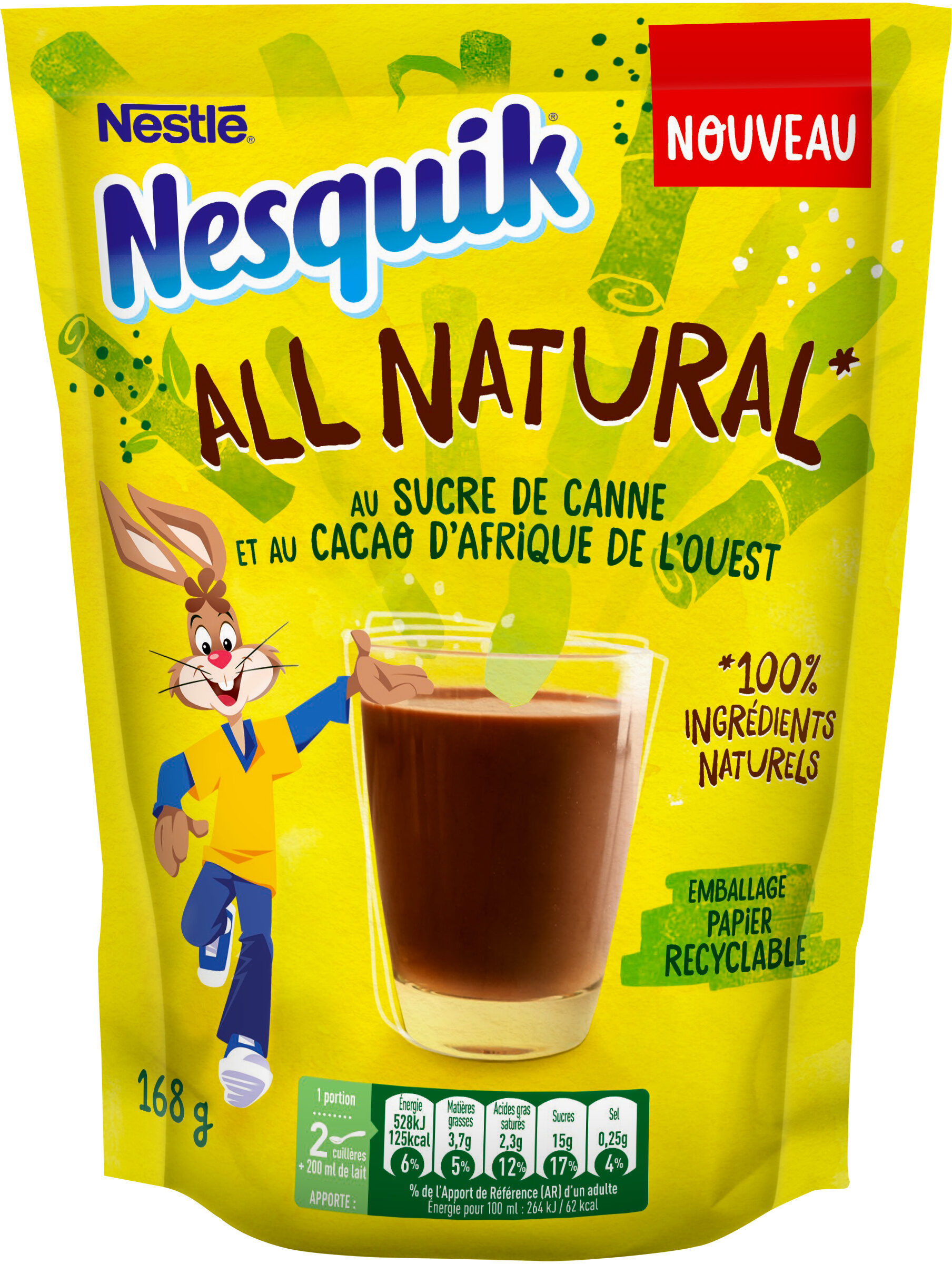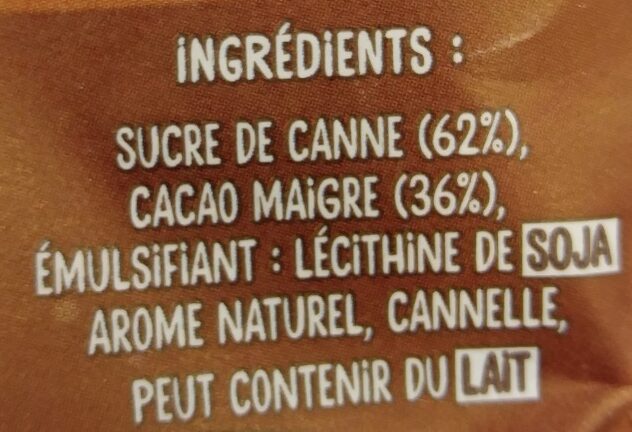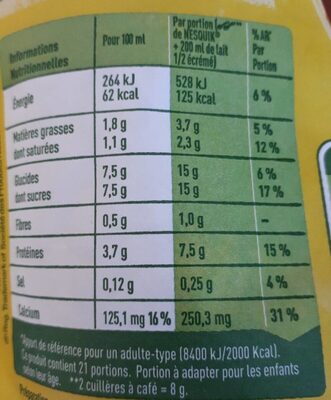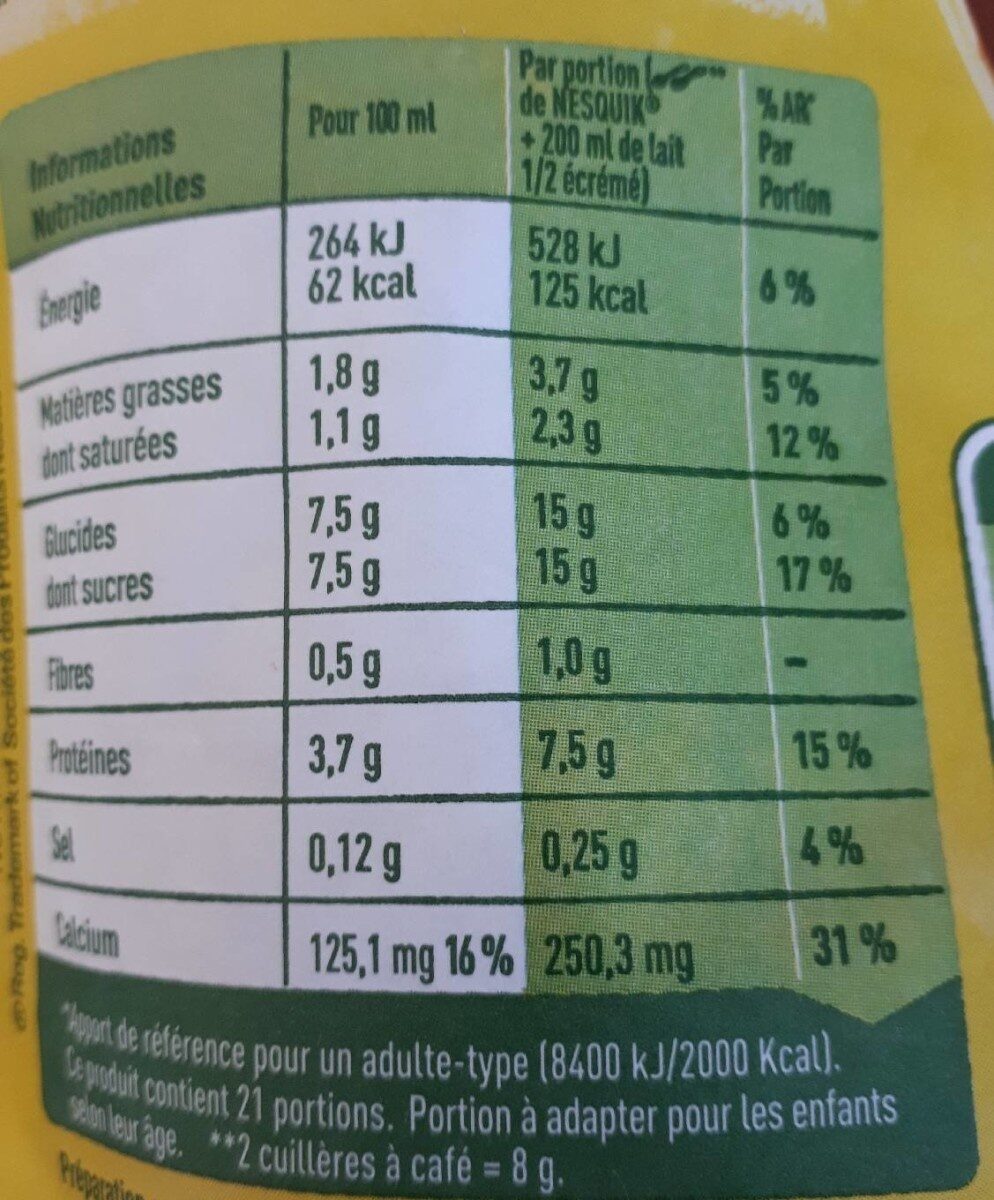NESQUIK ALL NATURAL 168g - Nestlé - 168 g
Aquesta pàgina del producte no està completa. Podeu ajudar a completar-la editant-la i afegint-hi més dades a partir de les fotos ja disponibles, o fent-ne més amb l'aplicació de androide o iPhone / iPad. Gràcies!
×
Algunes de les dades d’aquest producte les ha proporcionat directament el fabricant NESTLE FRANCE. - Servei al client: Formulari de contacte 0 809 400 412 (service gratuit + prix de l'appel)
Codi de barres: 7613036825658 (EAN / EAN-13)
Nom comú: Préparation en poudre instantanée pour boisson cacaotée
Quantitat: 168 g
Empaquetament: en:Bag, en:Box, fr:Sachet en papier recyclé
Categories: Begudes, Cacau i derivats, Pols de coco i xocolata, Begudes instantànies, en:Chocolate powders
Etiquetes, certificacions, premis:
Lliure de gluten, Sense aromes artificials, Punt verd, Sense colorants, Sense aromes afegits, Triman

Origen del producte i / o dels seus ingredients: Origine du produit fini : Hongrie # Origine "Fèves de cacao" : Afrique de l'ouest
Origen dels ingredients: fr:Cacao d'Afrique de l'Ouest
Botigues: Carrefour market, Carrefour
Països on es va vendre: Bèlgica, França, Alemanya, Itàlia, Espanya
Matching with your preferences
Entorn
Petjada de carboni
Empaquetament
Transport
Altres dades
Preparació: Versez 2 cuillères à café de Nesquik dans 200 ml de lait chaud ou froid. Remuez et c'est prêt !
Condicions de conservació: A conserver dans un endroit frais et sec.
Servei al client: Nestlé France, 34-40 rue Guynemer 92130 Issy-les-Moulineaux
Report a problem
Fonts de dades
El fabricant NESTLE FRANCE utilitza Equadis per transmetre automàticament dades i fotos dels seus productes.
Producte afegit per kiliweb
Última modificació de la pàgina del producte per roboto-app.
La pàgina del producte, també editada per alex-off, big-brother, corrigo, davidepio, dea, didierg, ecoscore-impact-estimator, elcoco, fiffi, giuliacrepaldi, inf, moon-rabbit, musarana, nestle-france, openfoodfacts-contributors, org-nestle-france, packbot, rosamary, scanbot, stephane, tacite-mass-editor, thaialagata, yuka.UnA4WUc1OWVnNkJUdXN3dzNCS00xK2xsNXBpYmNHMjhkZHNLSWc9PQ, yuka.VExvOFNMUWZtNmtMbnZjZDdqL2wyZnRjMklQellGaW5KL1VLSWc9PQ, yuka.Vko0UU1ZaFluYVVXbjhJenhoM0p4NHRZNXA2QVJsNndKOFFiSVE9PQ, yuka.WXBvTUg1VmVqTVVMdzh3Q3hFMzA2UE5KeTdpd1RHYVlLdk13SVE9PQ, yuka.WXZzT0lQZ2tnTWRheGNNVTVCZjgzb0pZd2JLSVdtV1JJc2hOSVE9PQ, yuka.ZmZsZlBmNHYvZHNIcHZNMzcwUHp5dlJ1bDYydVgwT2xDL0FMSWc9PQ, yuka.sY2b0xO6T85zoF3NwEKvlkJ5cMHf_w7bJSHtmESu4_eWcIXMY_xv4bXdNqg.











